What operating system do you want it to run? When deciding which tablet to buy, that should be your first question. There are lots of great iPads, and Windows tablets out there, but if you’re reading this article, we’re guessing you’ve settled on Android.
And it’s easy to see why, especially if you already own an Android phone. Whether you’re looking for a productivity device, or just something to game and watch videos on, there’s an Android tablet to suit you.
One company you won’t see here though is Amazon. Fire tablets run a modified version of Android, but have no access to the Google services we’ve come to expect.
If affordability is your top priority, see our separate round-up of the best budget tablets.
Best Android tablet 2025
1. Xiaomi Pad 7 – Best Overall
Pros
- Premium build
- Excellent screen
- Solid performance
- Range of accessories
Cons
- No fingerprint scanner
- Mediocre AI implementation
Price When Reviewed:
$499
Best Prices Today:
Xiaomi’s affordable Android tablet has been excellent for a long time and the Pad 7 is another smash hit.
In so many ways, it looks, feel and performs like a flagship tablet yet with a distinctly mid-range price, which you might find even lower if you buy from the official store where you are likely to get freebies and discounts on accessories.
Those accessories are part of what make the Pad 7 an attractive and versatile tablet. The Focus Pen and two different keyboard cases mean it can handle anything from emails to writing a novel and creative tasks, too.
Even if you shun those and just use it as a tablet on its own, Xiaomi has got just about everything right here. Performance is speedy and the display is one of the best LCD panels you’ll find at this price, balancing real-estate without the device being too big while including a 144Hz refresh rate.
There are downsides but only minor such as the lack of a fingerprint scanner and mediocre AI (Google Gemini aside). You can also find longer software support elsewhere but these things don’t stop the Pad 7 being the best value Android tablet you can buy.
Read our full
Xiaomi Pad 7 review
2. Samsung Galaxy Tab A9 – Best Budget
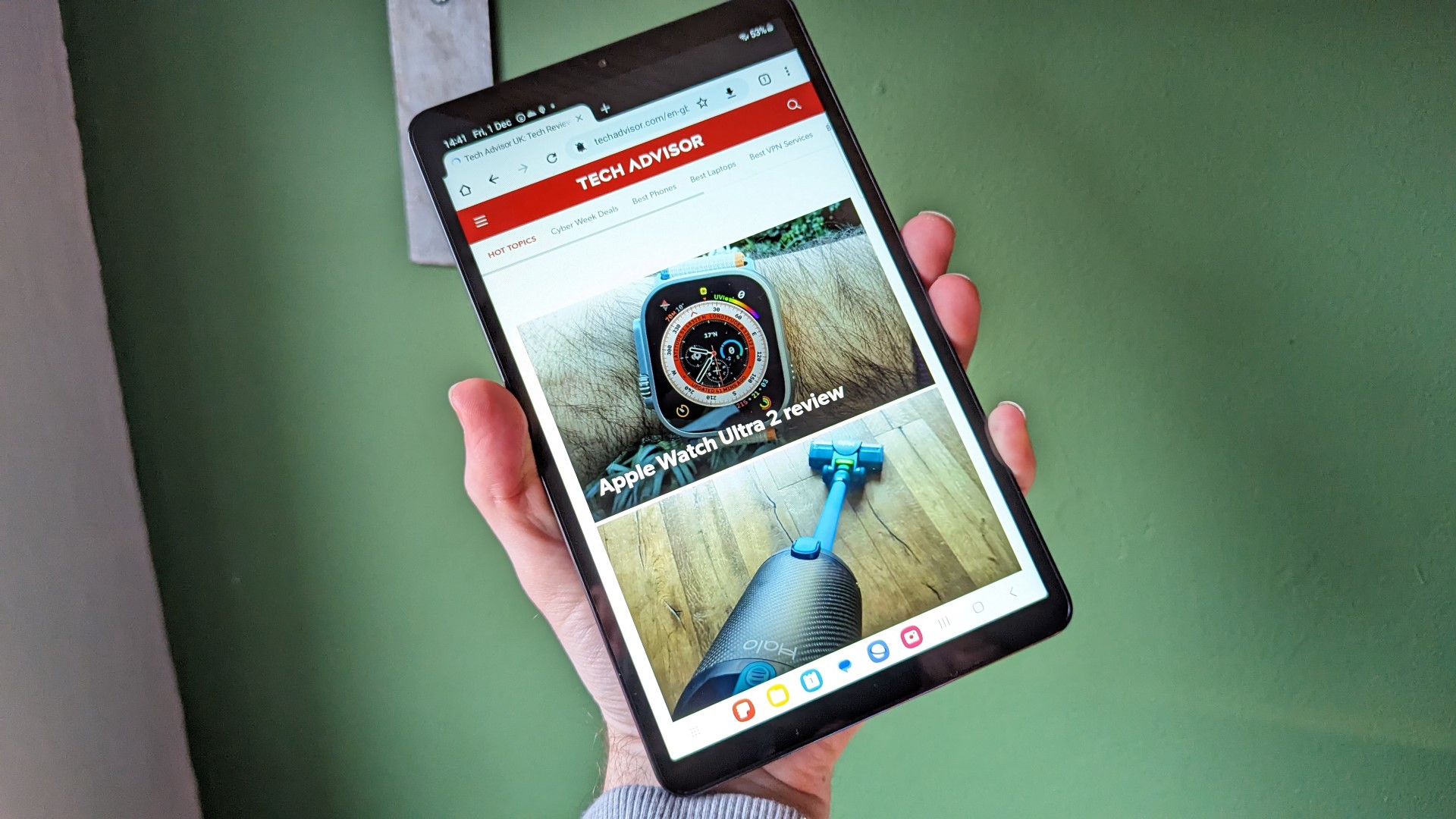
Pros
- Sleek, compact design
- Solid performance
- Attractive display
- Superb value for money
Cons
- Slow charging
- Terrible cameras
- Blurry scrolling
- Not available in the US
If you’re on a strict budget, you can’t go wrong with the Samsung Galaxy Tab A9. It starts at just £169 in the UK (currently unavailable in the US), yet offers everything most people are looking for in a cheap tablet.
That includes the fundamentals of a great tablet: solid performance, a decent 8.7-inch display and impressive battery life. You also get Samsung’s slick One UI software, all within a compact yet premium design.
However, it’s not all great news. Charging is annoyingly slow and the cameras are very basic, while scrolling pages and menus can leave a blurry ‘ghosting’ effect.
But none of those should be dealbreakers, especially at this price. The Tab A9 is simply superb value for money – if you need a device for the basics, you won’t regret buying one.
If you’re looking for something bigger (and slightly more expensive), consider the 11-inch Galaxy Tab A9+.
Read our full
Samsung Galaxy Tab A9 review
3. Samsung Galaxy Tab S10 Ultra – Best Big Screen
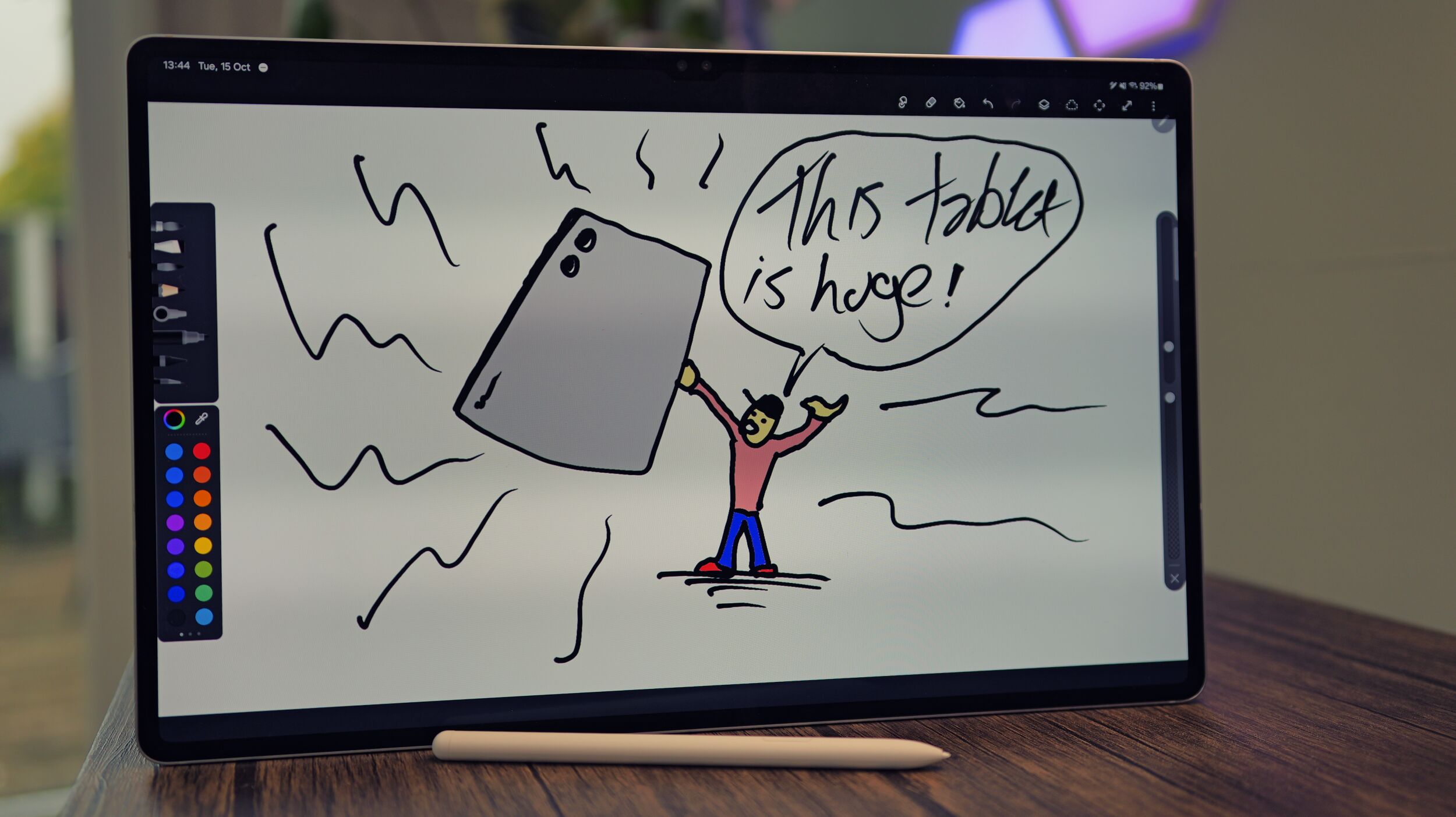
Pros
- Stunning 14.6in display
- Top-tier performance
- Impressive speakers
- Good front cameras
Cons
- Very expensive
- No charger in the box
- Thin bezel means accidental touches
Price When Reviewed:
From $1,199.99
Samsung’s biggest tablet isn’t suitable for everyone, starting with the price. But if you want a huge canvas to work with and prefer Samsung tablets to iPads, it’s the best option in the Android world.
That large 14.6-inch display is a gorgeous 120Hz OLED panel, which works in tandem with excellent speakers to deliver a top-tier video-watching experience. It doesn’t compromise on performance despite ditching Qualcomm for MediaTek in the engine room. It can handle all tasks – including gaming – with ease.
The included S Pen stylus is a great option for digital art or handwritten notes as well as plenty of other useful tasks, while the optional keyboard accessory makes it a realistic laptop alternative.
The lack of dedicated Android tablet apps still holds the tablet back, though, despite Samsung’s One UI delivering a strong overall software experience. Battery life is solid, but there’s no charger included, and a full charge will take well over an hour.
Ultimately, the Tab S10 Ultra is very similar to last year’s Tab S9 Ultra, with hit-and-miss AI features the most significant difference. But if you want the very best big Android tablet on the market, this is it.
Read our full
Samsung Galaxy Tab S10 Ultra review
4. OnePlus Pad 2 – Best Value Performance
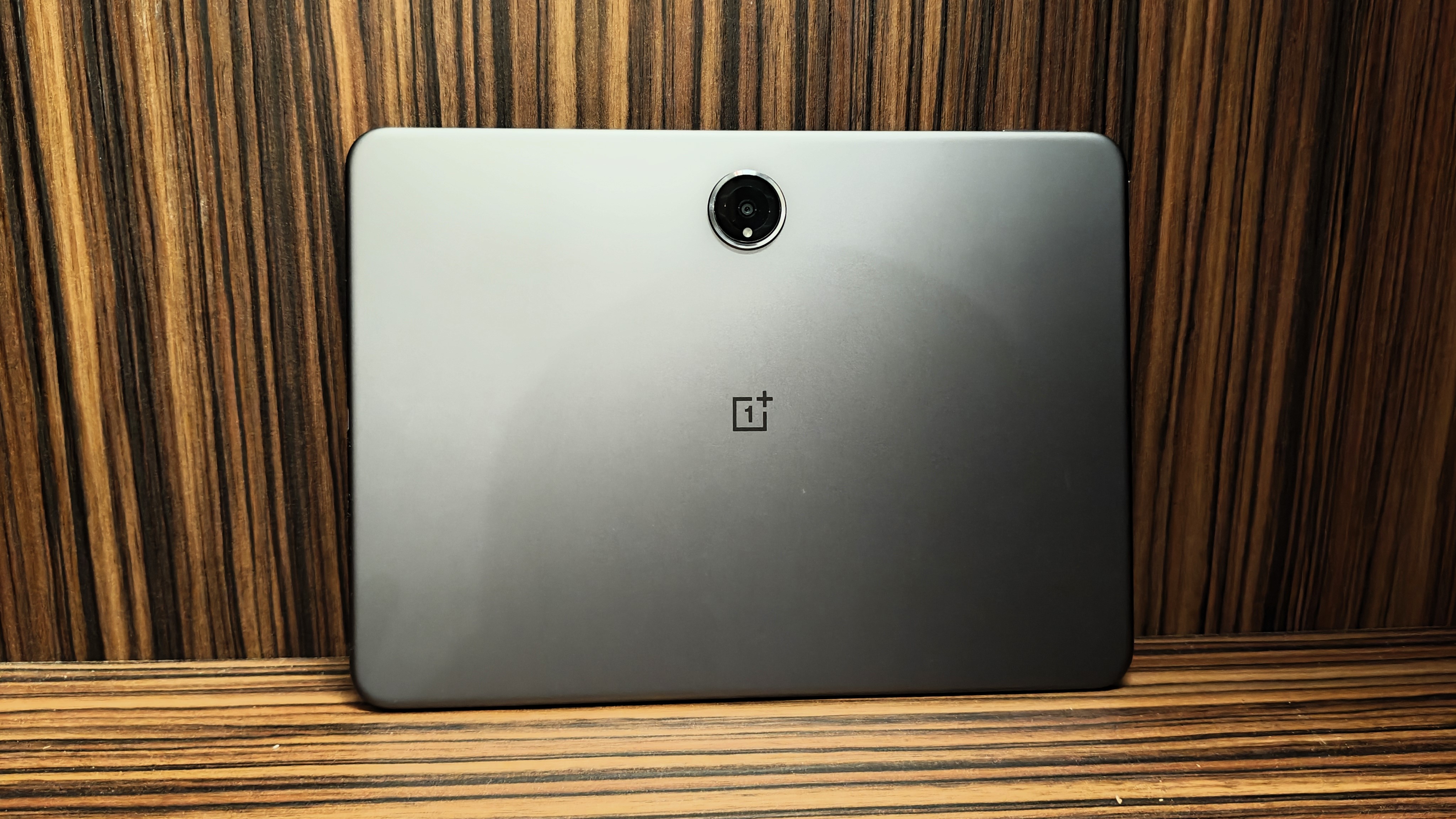
Pros
- Excellent performance
- Comfortable, elegant design
- Good display and sound
- Excellent battery life
Cons
- Could be even faster
- Mediocre cameras
- Poor desktop mode
Price When Reviewed:
$549.99
Best Prices Today:
The original OnePlus Pad was an excellent tablet, but its successor is even better.
Moving to the Snapdragon 8 Gen 3 delivers a nice performance boost, and means it’s almost as good as the best Android phones around. Alongside a high-quality 144Hz display and premium design that closely resembles flagship tablets and OnePlus is on to a winner.
Other highlights include strong battery life and impressive audio from no fewer than six speakers. The software feels generally optimised for the big screen, and OnePlus is offering support for four years.
Inevitable compromises come in the form of disappointing cameras, but that’s hardly a priority for most tablet users.
Overall, the OnePlus Pad 2 represents great value for money, and offers everything most people are looking for in an Android tablet.
Read our full
OnePlus Pad 2 review
5. Google Pixel Tablet – Most Versatile
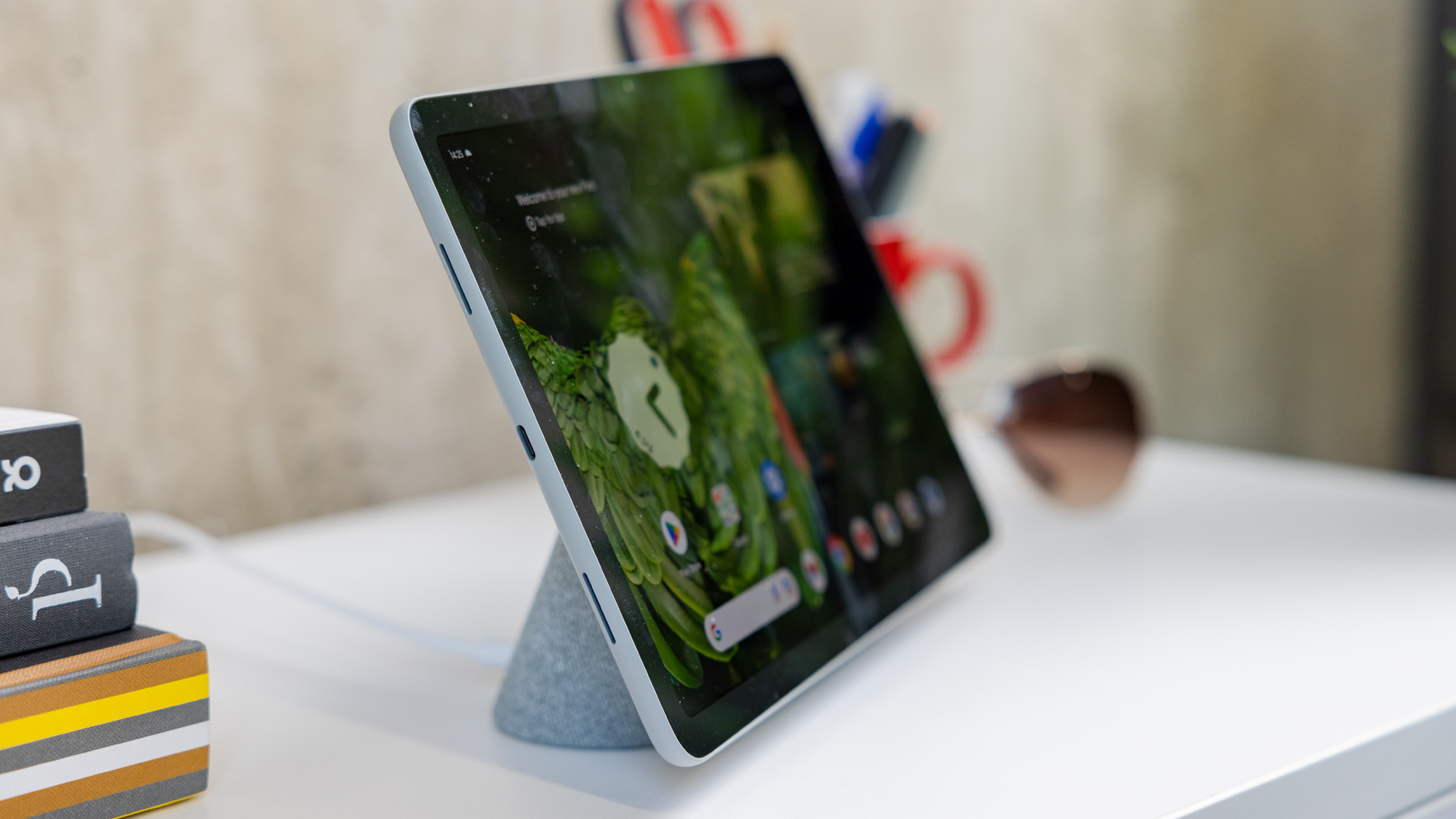
Pros
- Sleek & stylish design
- Solid performance
- Good battery life
- Hybrid use
Cons
- Dock has mediocre audio
- Missing Nest Hub features
- Slow charging
Price When Reviewed:
$399 (128GB) | $499 (256GB)
Best Prices Today:
Google’s latest Android tablet is a bit of an odd one in various ways, so it might either be perfect for you or not really make much sense.
The tablet itself is very good, albeit not outstanding in any particular way, though you can now buy it on its own. The device can be bought with the Charging Speaker Dock for £100/$100 extra, which turns it into a smart display that’s similar to the Nest Hub Max.
However, it runs full Android and magnets mean you can take it on and off the stand easily, plus it’s the first ever tablet with Chromecast built in. The smart home software isn’t as good as the Nest Hubs and additional docking stations are expensive but it’s an attractive hybrid option if that’s what you’re looking for.
Read our full
Google Pixel Tablet review
6. Honor MagicPad 2 – Best Value Big Screen
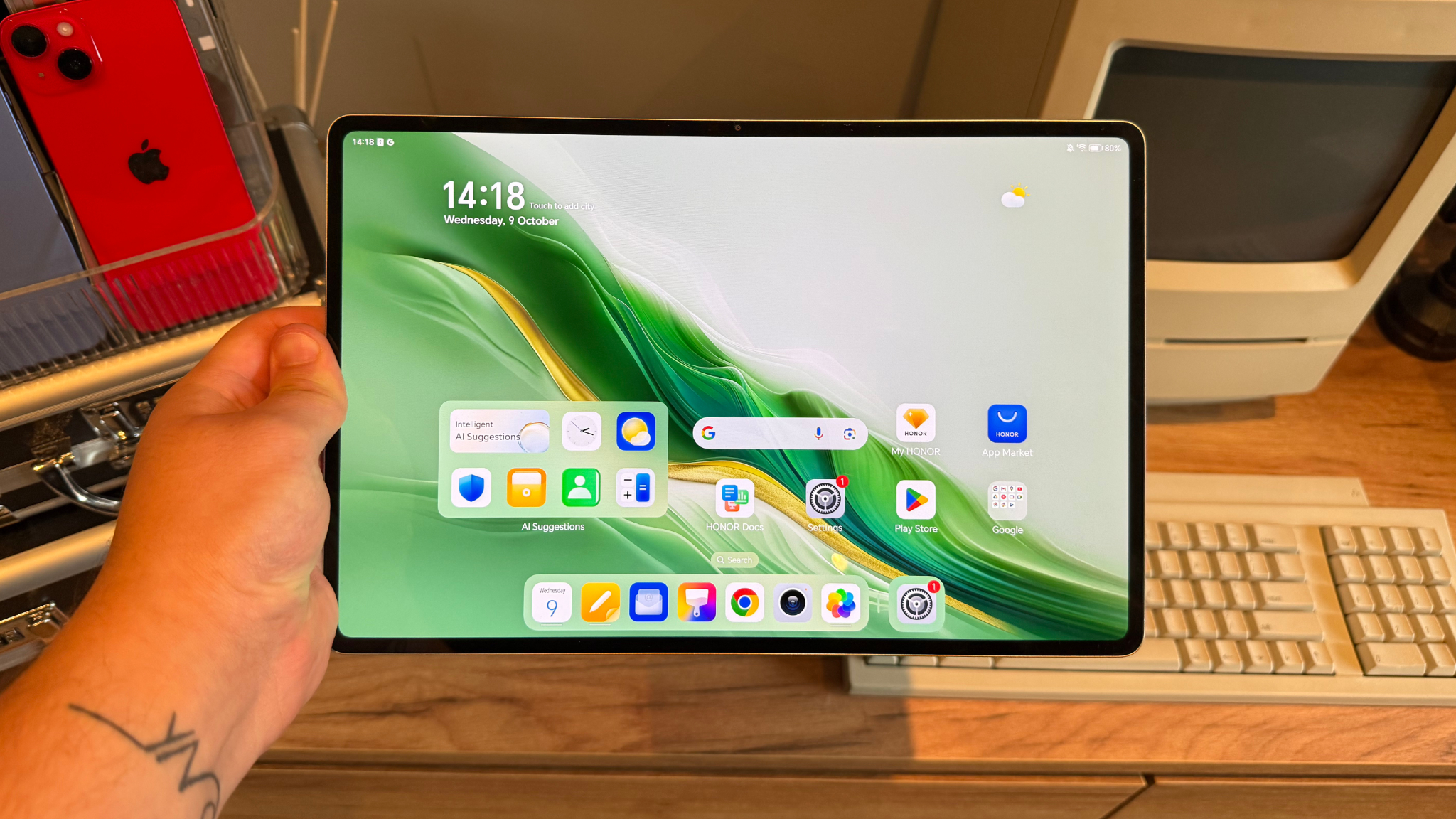
Pros
- Large 12.3-inch OLED display
- Manages to get very bright
- Smooth and reliable performance
- Productivity features that are actually helpful
Cons
- No IP rating for water or dust resistance
- Camera quality is limited
If you can’t afford a big-screen premium tablet like the Samsung Galaxy Tab S10 Ultra then Honor is on hand with the answer.
The Magic Pad 2 is a fantastic value option at under £500 yet has a stunning 12.3-inch OLED screen with a high 144Hz refresh rate. It’s great for just about anything, whether you’re streaming media, playing games or editing photos.
Performance is smooth, battery life is solid and charging is fast. Honor even includes accessories to get you set up for versatile usage on the go.
It’s also one of the only Android tablets we’ve tested with a decent AI implementation.
While the bundled keyboard case doesn’t have a trackpad and the Magic Pad 2 carries no waterproof of dust protection, it’s a very attractive value proposition.
Read our full
Honor MagicPad 2 review
7. Xiaomi Pad 6S Pro 12.4 – Premium without the price tag
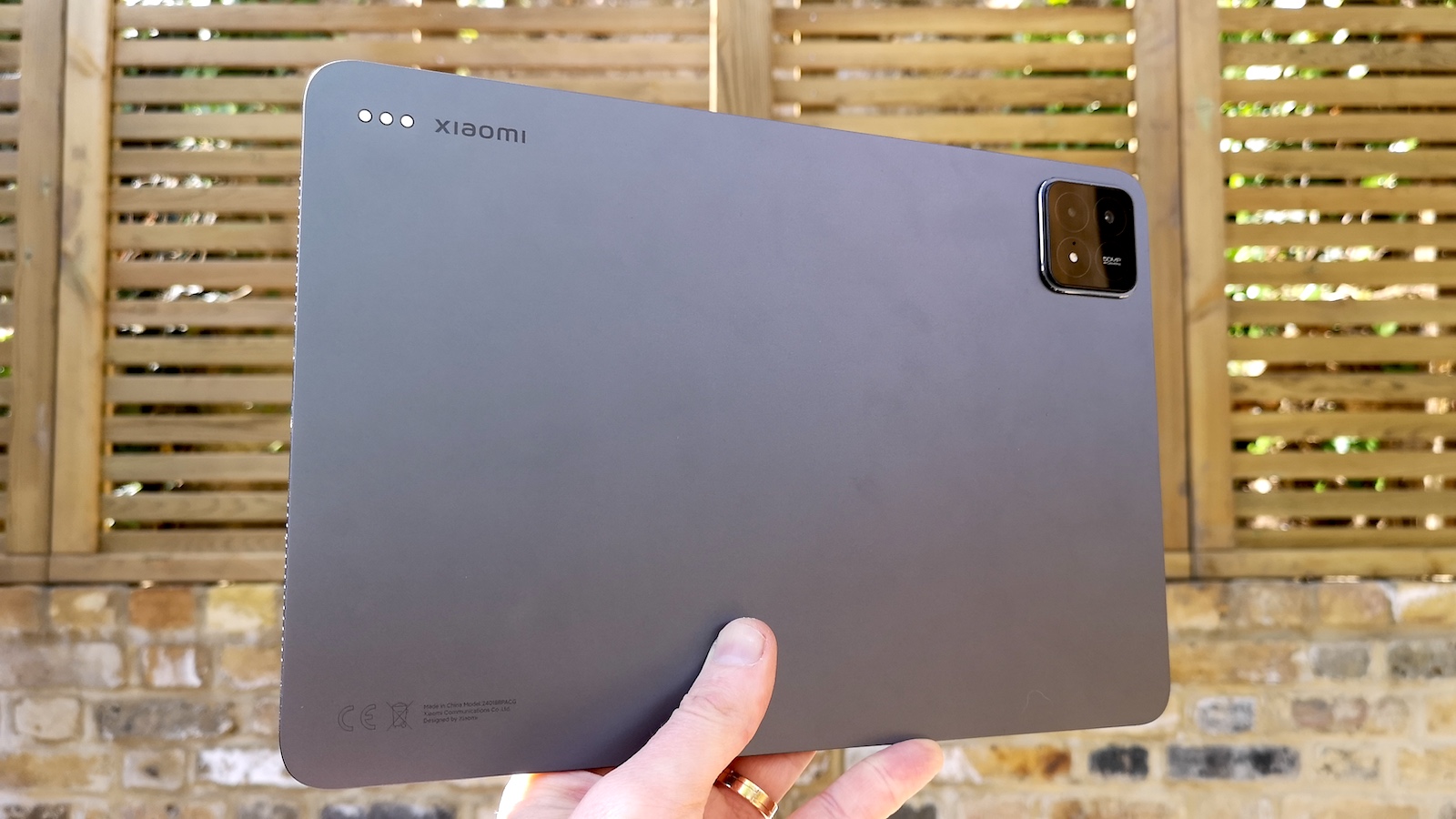
Pros
- Excellent, smooth display
- Good battery life
- 120W fast charging
- Fun compatible stylus
Cons
- Limited software update support
- Stylus not included
- No 5G option
Price When Reviewed:
Unavailable in the US
The Pad 6S Pro 12.4 is a more premium tablet than we’ve come to expect from Xiaomi, but it doesn’t disappoint.
Highlights include strong performance from the Snapdragon 8 Gen 2 chipset, an excellent 144Hz display (12.4 inches, in case the name didn’t give it away) and solid battery life. You also get a slick, premium design and punchy audio via six speakers.
Xiaomi’s own stylus is also fun to use, though it’s sold separately and the tablet doesn’t work with third-party options. And only two years of OS updates and three years of security updates is a little disappointing.
However, it feels like a high-end tablet yet doesn’t have the price tag to match, making the Pad 6S Pro 12.4 a real contender.
Read our full
Xiaomi Pad 6S Pro 12.4 review
8. Honor Pad 9 – Affordable Performance
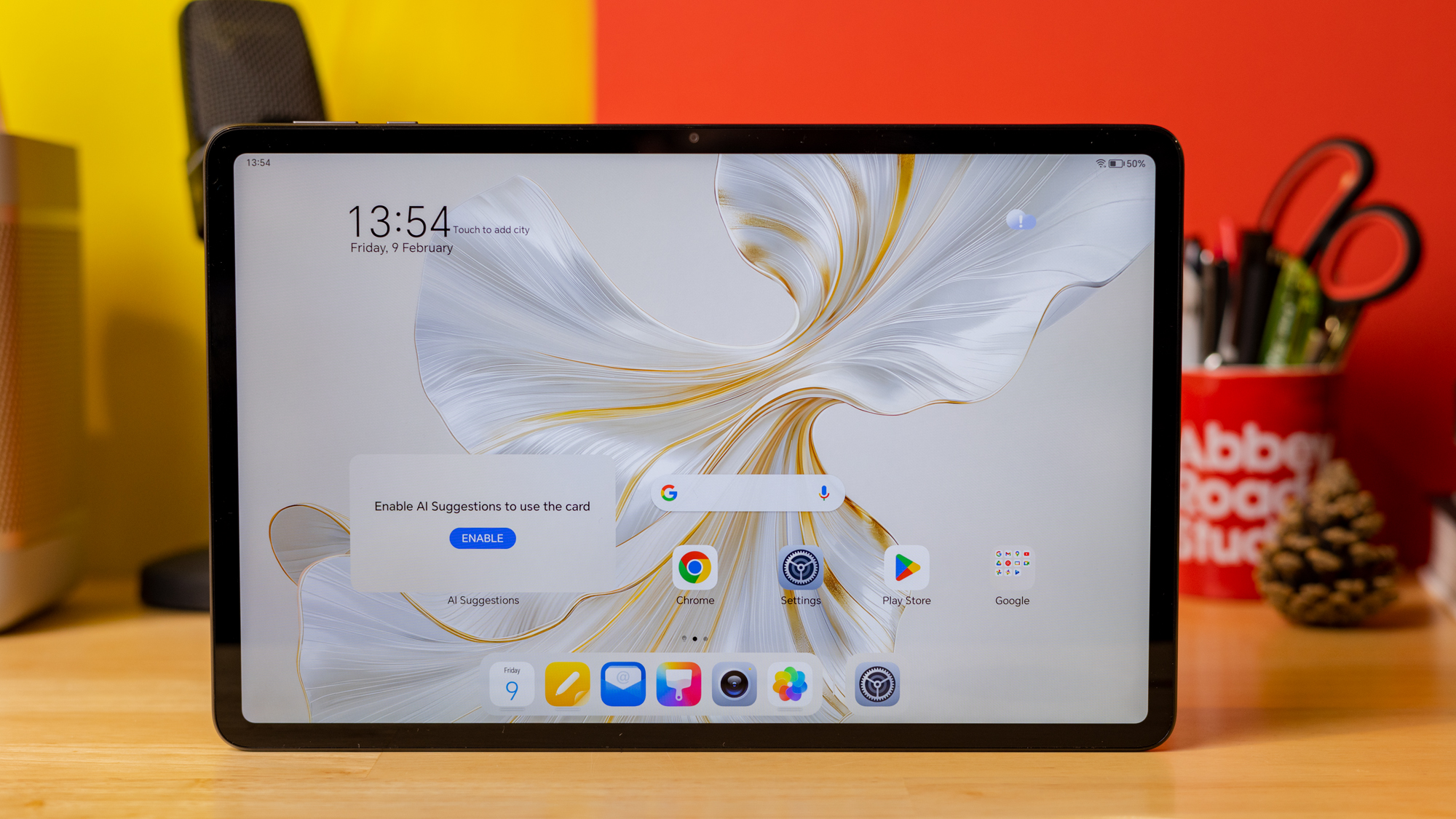
Pros
- Strong performance
- Great gaming experience
- Impressive 120Hz screen
- Sleek design
Cons
- Underwhelming battery life
- Slow charging
- No software update commitment
- Not available in the US
For less than £300, the Honor Pad 9 is superb value for money. If you can live with its compromises – namely a disappointing combination of sub-par battery life and charging – it could be the Android tablet for you.
Because there’s a lot to like here. Despite only having a Snapdragon 6 Gen 1 chipset, performance is a key strength, particularly coming to the fore while gaming. That’s where you’ll also make use of the excellent 12.1-inch display, which combines a high resolution with 120Hz refresh rate.
Elsewhere, quad speakers deliver punchy audio, while the cameras are fine for video calls or the occasional photo. Honor’s take on Android leaves something to be desired though, especially with no specific commitment to software updates.
The Honor Pad 9 has a few key weaknesses, but lots of major strengths too.
Read our full
Honor Pad 9 review
9. Lenovo Tab Plus – Best for Entertainment
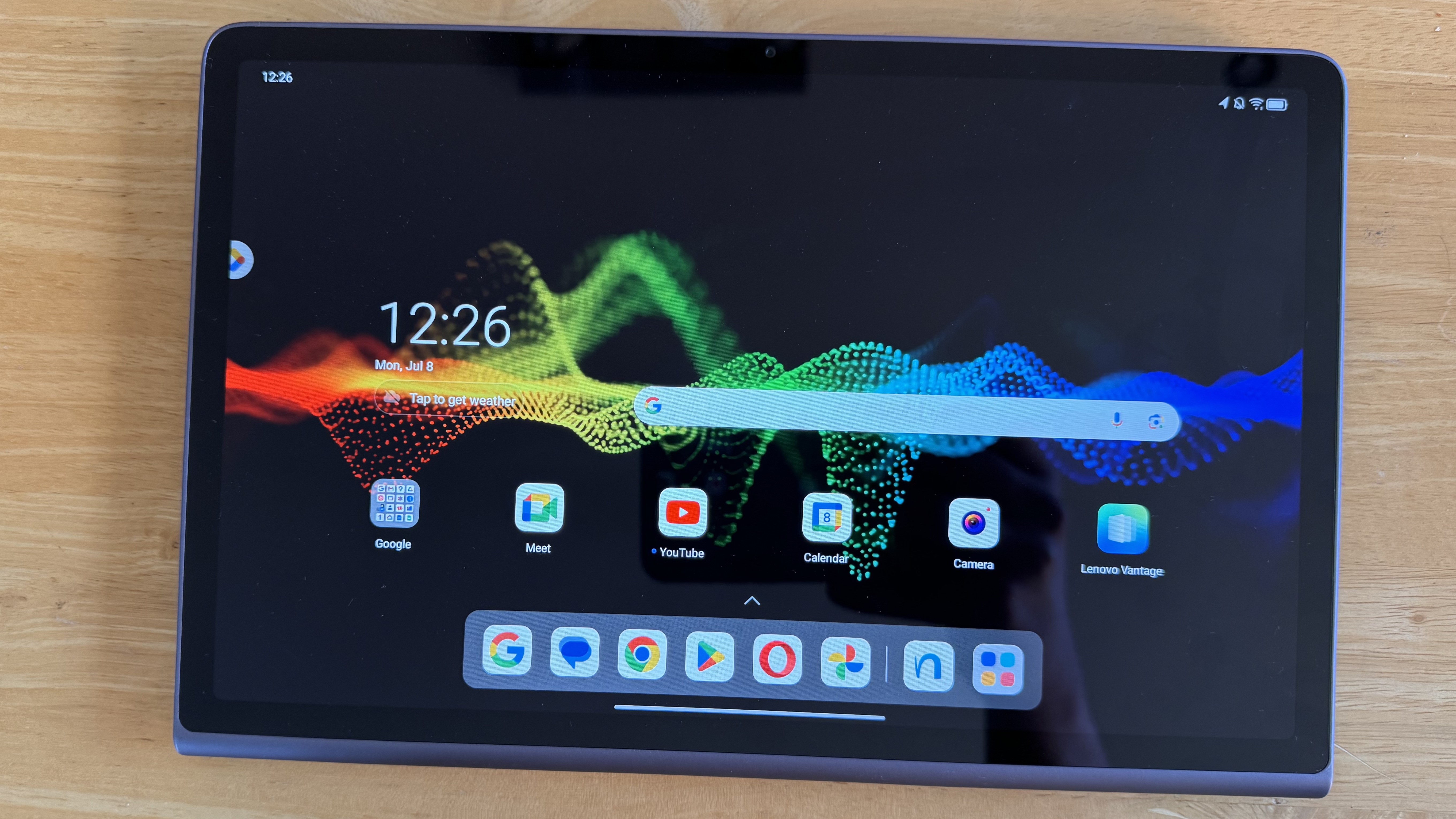
Pros
- Great screen and speakers
- Useful built-in kickstand
- Superb battery life
- Durable, sleek design
Cons
- Underwhelming productivity and gaming performance
- Only two major OS updates
- Not available in the US
If your top priority is watching movies and TV shows, look no further than the Lenovo Tab Plus. It has an audiovisual experience that’s up there with the very best, despite starting at under £300.
That starts with the 11.5-inch, 90Hz LCD display, which offers excellent clarity and accurate colours. An incredible eight JBL-tuned speakers offer immersive sound, while a built-in kickstand allows you to easily watch hands-free.
Elsewhere, the excellent battery life means you’ll be able to watch for many hours without needing to reach for the charger.
However, while performance is fine for loading up videos, it becomes more of an issue for productivity tasks and gaming. Lenovo is also only supporting the device with two years of OS updates, despite four years of security patches.
Overall, the Lenovo Tab Plus is a very good tablet, but only worth buying if you plan on watching lots of movies or TV shows.
Read our full
Lenovo Tab Plus review
10. Samsung Galaxy Tab S10 FE – Best with 5G
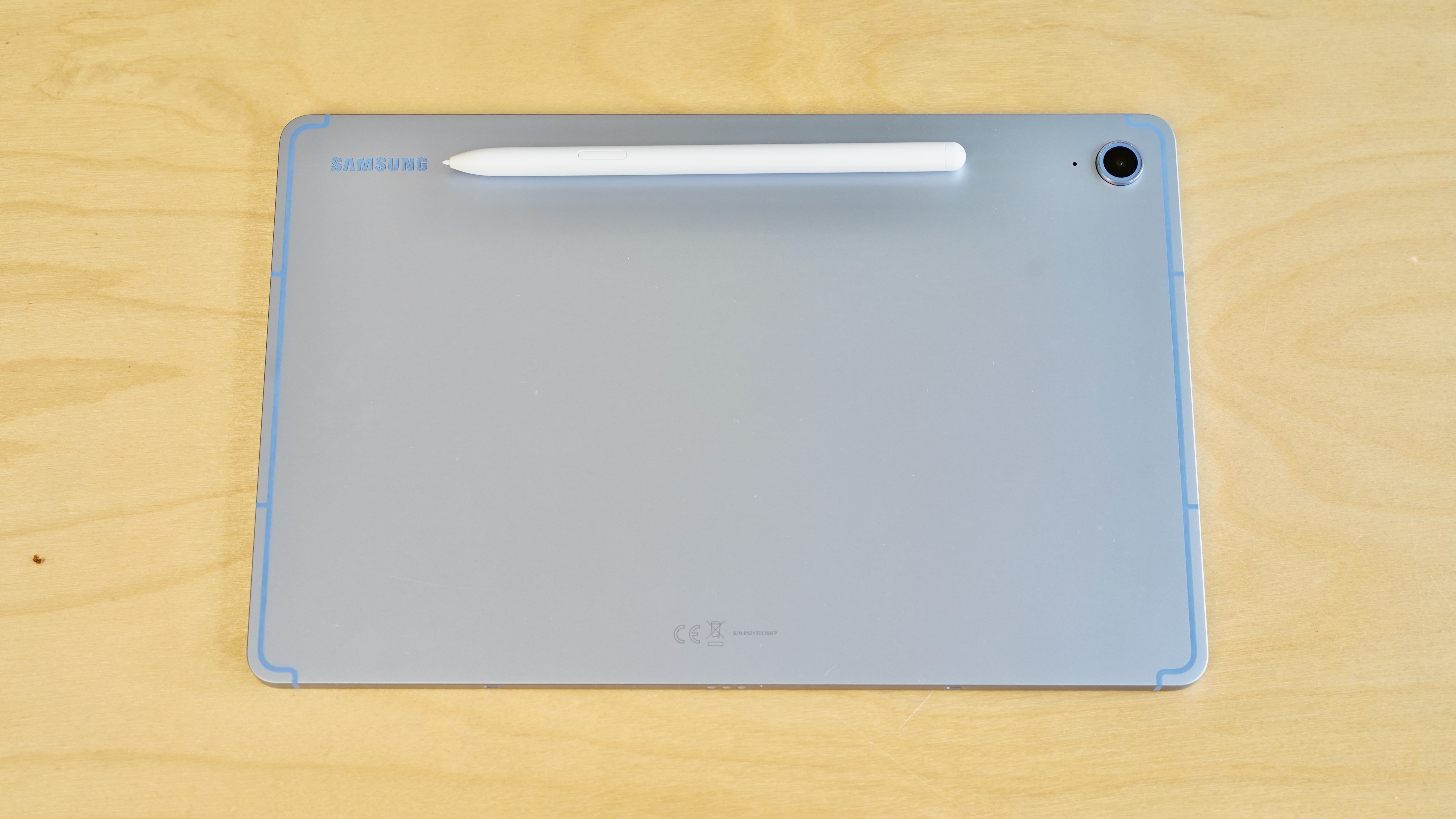
Pros
- Excellent IP-certified design
- Brilliant S Pen stylus implementation
- Six years of software updates
- Optional 5G
Cons
- Fairly minor improvements since 2023
- Price hike
- Rivals offer better performance and specs
Price When Reviewed:
From $499.99
Though the FE range of Samsung devices continues to sit somewhat awkwardly in the market in various ways, it does satisfy a particular set of needs.
Namely, if you want a decent spec Samsung tablet without splashing out on the flagship models. While there are better specs available with other brands (often a lower prices), some of the benefits available here might make it worth it.
There’s much longer software support for starters and the excellent S Pen comes included, too. Those looking for a tablet with 5G connectivity won’t find it on many rivals, even if it does have a hefty upgrade price.
Performance and battery life are better than its predecessor, but if you do see the very similar Galaxy Tab S9 FE at a good price, it could be a better value purchase.
Read our full
Samsung Galaxy Tab S10 FE review
Why you should trust Tech Advisor
Android tablet reviews and buying advice have been a staple of Tech Advisor’s coverage since the original Samsung Galaxy Tab arrived in 2010.
We’ve seen Android tablet makers scramble to offer the biggest, brightest, highest-resolution, fastest-refreshing, toughest, displays; we’ve seen an arms race in processors and graphics in the quest for the ultimate portable performance; continued improvements to accessories and software to make for the best possible productivity experience; a push for batteries that can go – never mind all day – but all week; and new technologies that enable water resistance and vastly improve audio.
We’ve held your hand through a fascinating journey of tablet hardware, and today – some 14 years later – it’s the software smarts and once impossible to imagine AI capabilities that glue us to this path. We perform in-depth, real-world testing on every new Android tablet that’s worth buying, integrating it into our daily lives for the most authentic experience possible and making sure we are in a position to give you the best possible buying advice.
Android tablets buying guide
What size tablet should I buy?
The first thing to consider (apart from budget) is screen size. This ranges from around 7-inch to 13-inch, although for most people, an 8-inch or 9-inch tablet represents the best compromise between usability and portability.
With bigger screens comes more weight. Aim for a maximum of around 450g, as anything heavier can be uncomfortable to hold for long periods, such as when watching a film. That said, if you intend for your new slate to spend most of its life propped up on your lap or on a desk, weight isn’t likely to be so much of an issue.
How much storage do I need?
Ideally, you should aim for 32GB of internal storage as an absolute minimum, but more is better for downloading media.
Many, but not all, Android tablets feature a microSD card slot, so you can add more storage when you need it. If you’re going for a tablet with no slot, make sure you buy the biggest capacity you can afford, as videos and some apps can use up an awful lot of storage in a single hit.
And don’t forget that the big number on the box – 32GB, say – is the total amount. The usable amount, i.e. the amount which is empty and available for you to use after the Android OS itself is installed, can be quite a lot less than that headline figure.
What about the screen?
Few tablets these days have poor-quality screens, but some do. Look for an IPS LCD or (better yet) OLED/AMOLED screen and avoid anything with a ‘TN’ screen as these have poor viewing angles.
In terms of resolution, higher is better, but the more important number relates to pixel density. Aim for 300 pixels per inch (often abbreviated to ‘ppi’) or higher, as this will ensure a sharp-looking image that’s not jagged or blocky.
What features do I need?
Most Android tablets feature Wi-Fi and Bluetooth as their primary means of connectivity, and some have NFC as well. NFC may come in handy for pairing to other compatible devices quickly, but it’s by no means essential.
What’s more useful is a video output so you can connect your tablet to your TV (usually via HDMI). However, you can use most Android tablets with Google’s Chromecast for watching catch-up TV, YouTube and other internet video services that are supported.
Some tablets have GPS – which makes them useful for navigation – but not all do. Another thing to watch for is a SIM slot. This is useful if you want to get online when you’re traveling or out of Wi-Fi range.
However, you’ll usually pay more for a cellular (3G/4G/5G) tablet, and you will need a dedicated SIM card with a data-only plan to enable in. In truth, it’s better to tether your tablet to your smartphone, if your mobile plan/carrier allows this.
What about performance, battery life and cameras?
If you want to know if a particular model is great for gaming or too slow for web browsing, then read our reviews, which include benchmark results for a more empirical comparison; you can’t rely on specifications such as processor speed or number of cores it possesses to guarantee good performance.
We also test battery life, to give you an accurate idea of how long each tablet should likely last between charges. The best tablets last around ten hours or more, while the worst only manage four to five hours on a charge.
The same applies to cameras, and as with performance, you shouldn’t judge by the number of megapixels. Instead, check out our test photos in each review to see whether you’re happy with the quality on offer. Few Android tablets have great cameras, and quite a few have awful ones, so if photos, videos and video calls are important, don’t buy before you’ve read our reviews.
Once you’ve got your Android tablet, you might do yourself a favour by investing in one of our best tablet stands, to make usage more comfortable, reduce neck strain, and improve your posture.



















Leave a Reply